
The MousterWorks cover is based on two paintings by the same artist:
The Art of Painting and Girl with a Pearl Earring
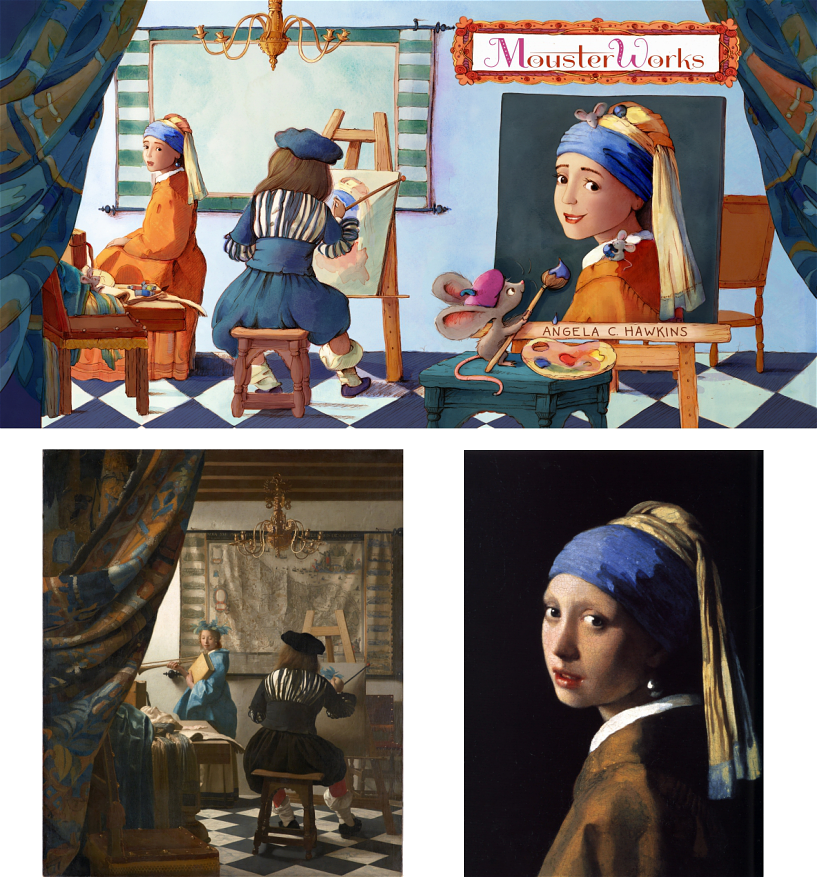
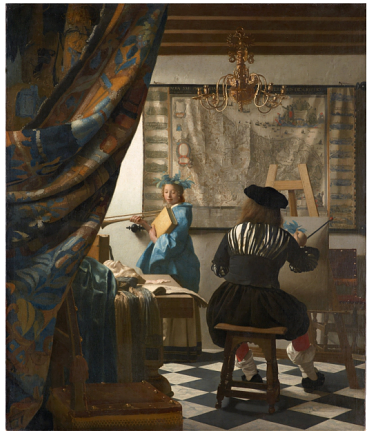
size of the original painting: 4 feet x 3.25 feet
Shh . . . This painting gives us the sense that we just stepped into Vermeer’s studio while he’s working. See how the curtain makes it feel like we’re peeking in, and that we should whisper? Now pay attention to the first thing you see. Notice how Vermeer uses the curtain, floor, furniture, color, and light to point our eyes toward the girl. Good artists intentionally use objects in their paintings (along with light and color) to show us what they want us to look at, and in what order. This is called composition. When you examine other paintings, consider what things the artist wants you to look at.
No one actually knows who the artist is in this painting, but some people think it’s Vermeer. One thing we know for sure: the girl in the original painting represents Clio (the goddess of history) because she’s wearing a laurel wreath and holding a trumpet.
And if you are wondering about the stick in the artist’s right hand, it is a maulstick. Painters rested their hands on these tools to avoid touching wet paint.
Fun Facts about The Art of Painting:
• Vermeer never sold this painting, even when money was tight. (Maybe it was his favorite!)
• Until 1860, another artist—Pieter de Hooch—forged his signature on this painting. A German art historian later set the record straight.
• In the MousterWorks cover, Angela C. Hawkins swapped Clio with a different character from Vermeer’s paintings. Can you tell who it is? (Learn more about her below!)
Can You Spy:
• A mask
• A chandelier
• A map
• A trumpet
• A laurel wreath
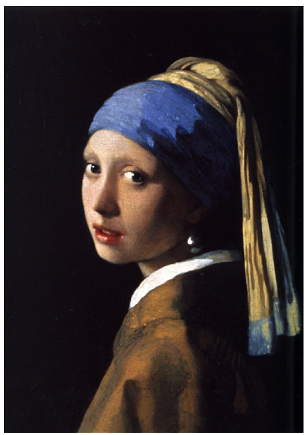
size of the original painting: 17.5 inches x 15 inches
There aren’t many details in this painting: it’s just a girl looking (at what?). But her expression, the light, and the color make us wonder: What is she thinking? What does she like to do? What is her name? Unfortunately, no one knows—which is kind of funny since this is Vermeer’s most famous painting!
One reason we don’t know her name is because Girl with a Pearl Earring is a tronie, not a portrait. Dutch and Flemish artists often painted tronies in the 16th and 17th centuries. Although portraits and tronies both show people’s head and shoulders, tronies usually featured people in costume (instead of normal clothes), doing something interesting (instead of just sitting), or making an interesting expression. Portraits usually mention the sitter’s name; tronies don’t. Artists were paid for portraits (we call this a commission) while tronies were usually painted for practice.
Although the girl in Girl with a Pearl Earring isn’t doing anything special, her turban (a popular fashion accessory at the time) is what makes this painting a tronie.
Fun Facts about Girl with a Pearl Earring:
• In 2006 the Dutch voted this their most beautiful painting, and like the Mona Lisa she’s so mysterious that people have been speculating about her for years in books and movies.
• Although the background is black today, experts think it was originally a deep green.
• This painting has had at least seven different titles, including: Portrait in Antique Costume, uncommonly artistic; Girl with a Turban; Girl with a Pearl; Head of a Young Girl; and The Pearl. What would you call it?
Try This:
Paint a portrait of a friend, then paint a tronie of them wearing a fun expression or costume. See more on the Activities page (look for Tronies and Portraits).
Meet the Artist:
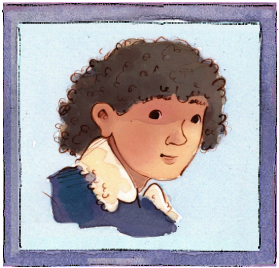
Johannes Vermeer and his wife had 15 children (11 surviving). With so many mouths to feed, he juggled three jobs as an artist, an art dealer, and an innkeeper. Johannes was probably self-taught and painted slowly, making almost 50 paintings in his life (about three a year). Only 34 have survived.
People especially love how Johannes painted light, usually shining from a window on the left.
Fun facts about Vermeer:
• You will find that many of Vermeer’s paintings look suspiciously alike. That’s because he often set up scenes inside two rooms in his house!
• Vermeer only dated three paintings, so we just have to guess when the others were made.
• Outside of his hometown, not many people knew about Vermeer’s art until two centuries after he died.
• Vermeer had expensive art tastes. He loved painting with ultramarine, which is made from crushed lapis lazuli—a beautifully blue, metamorphic rock that people use for jewelry. That’s what makes his blues so brilliant!
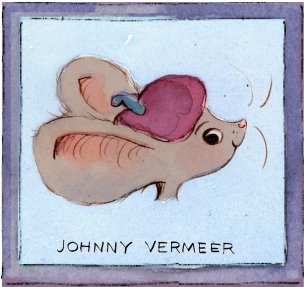
Where in the world: The Netherlands
